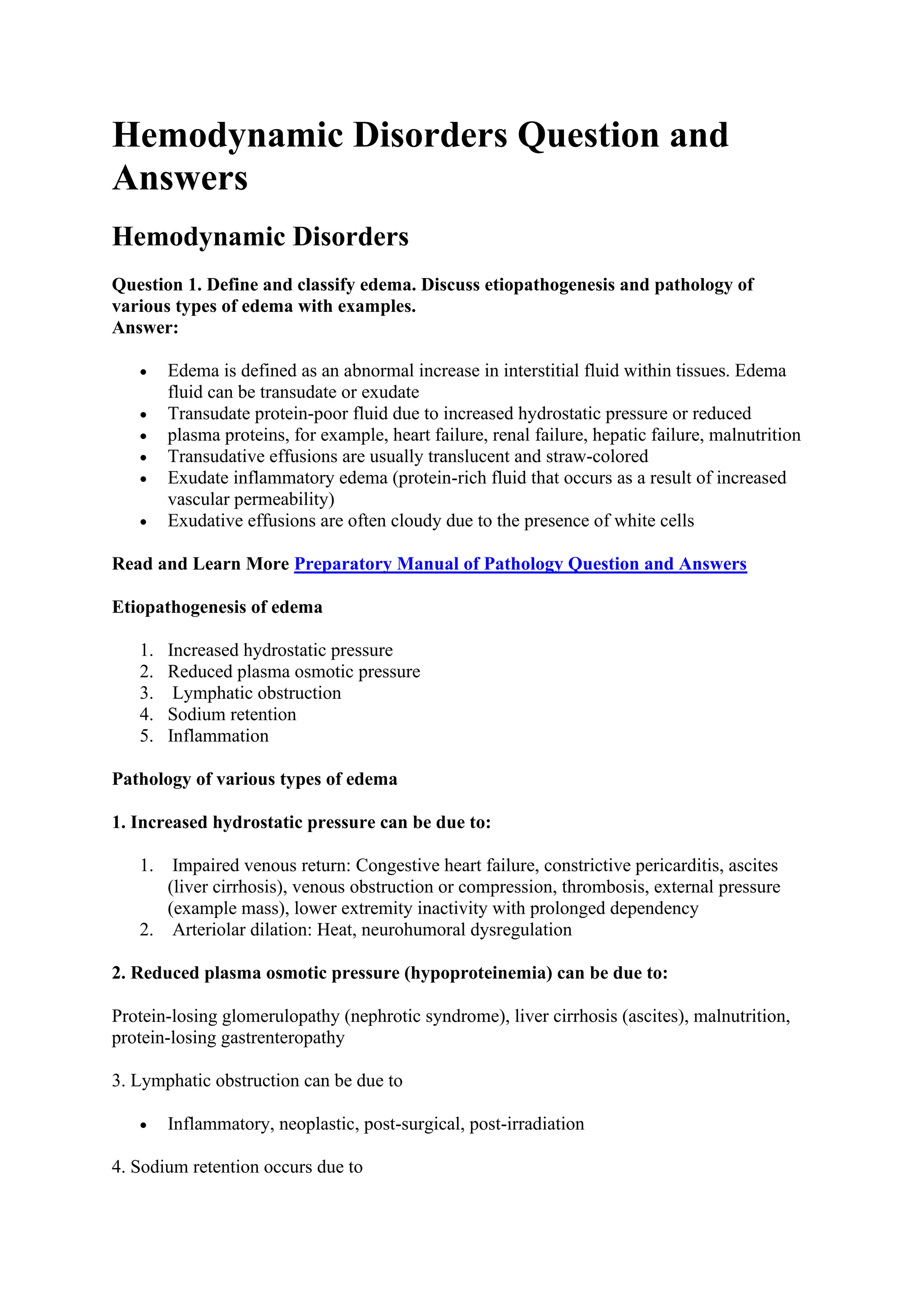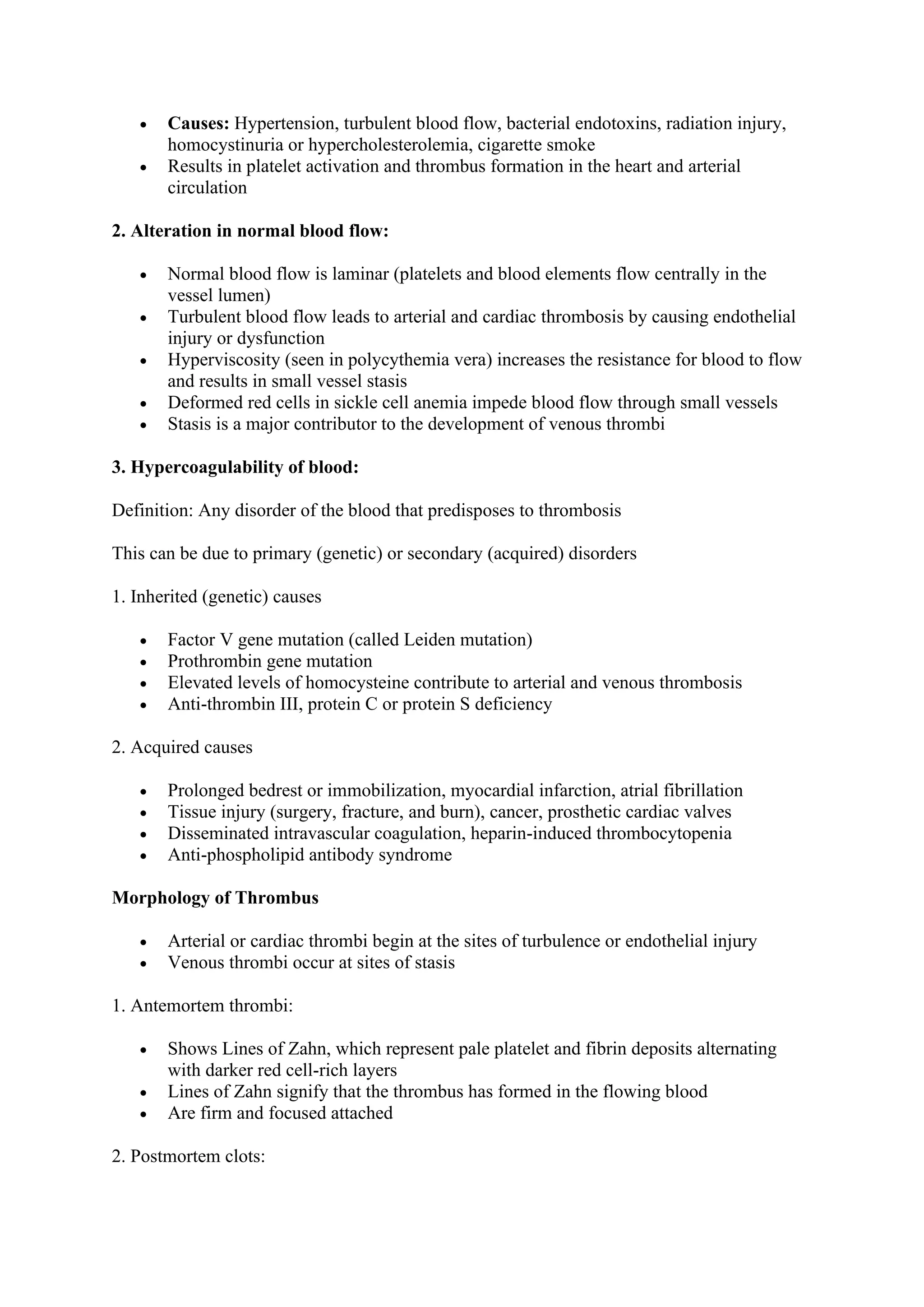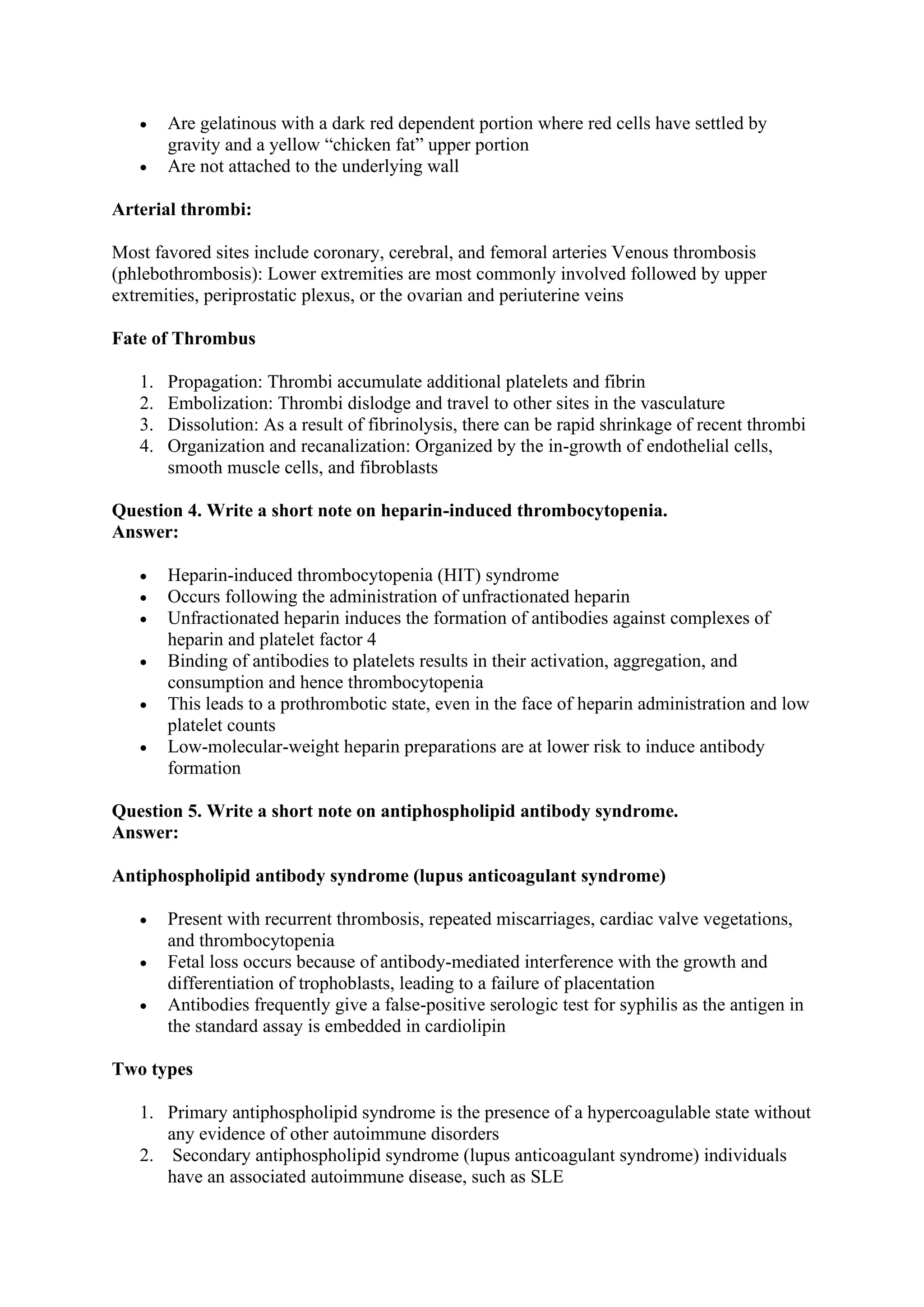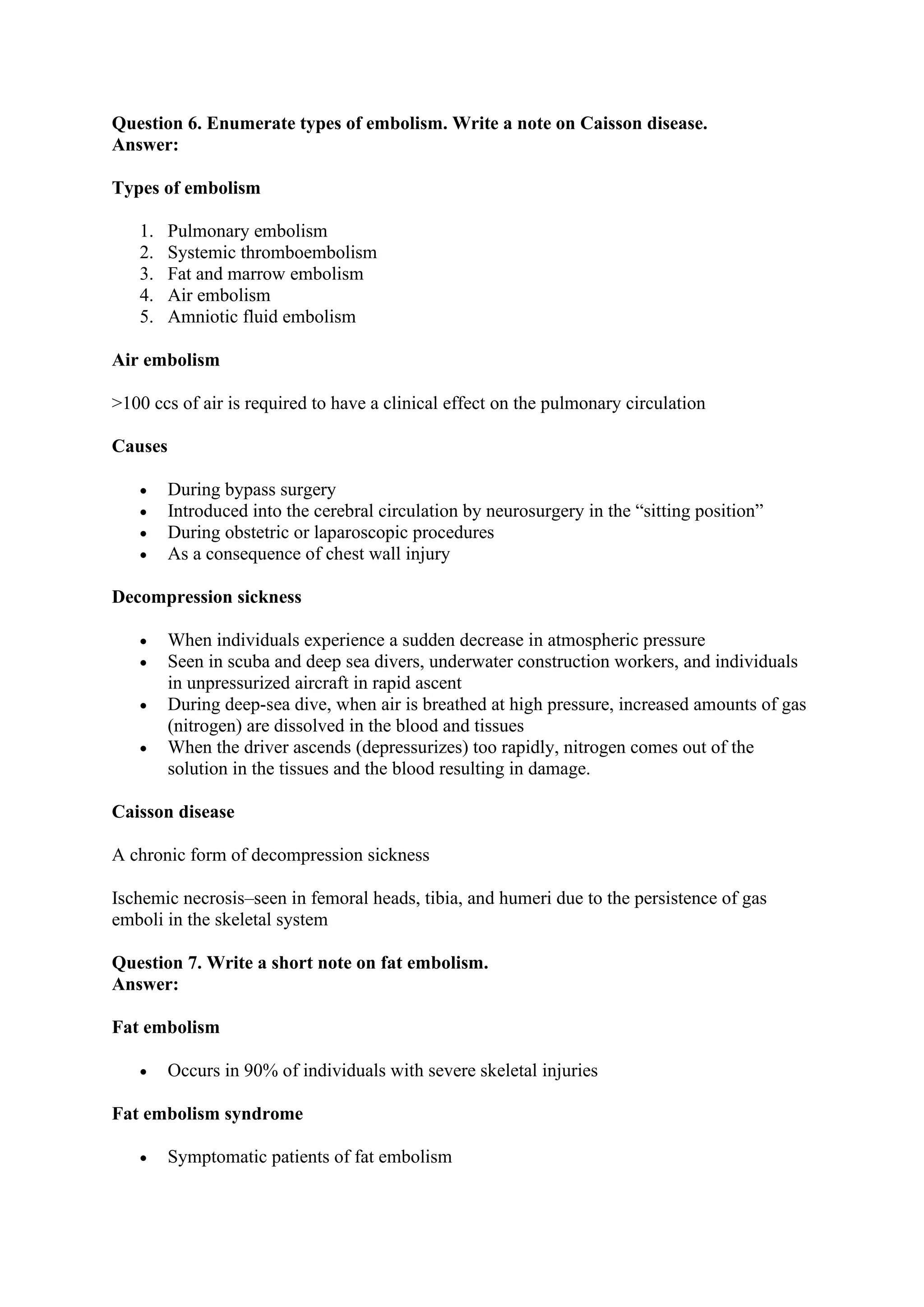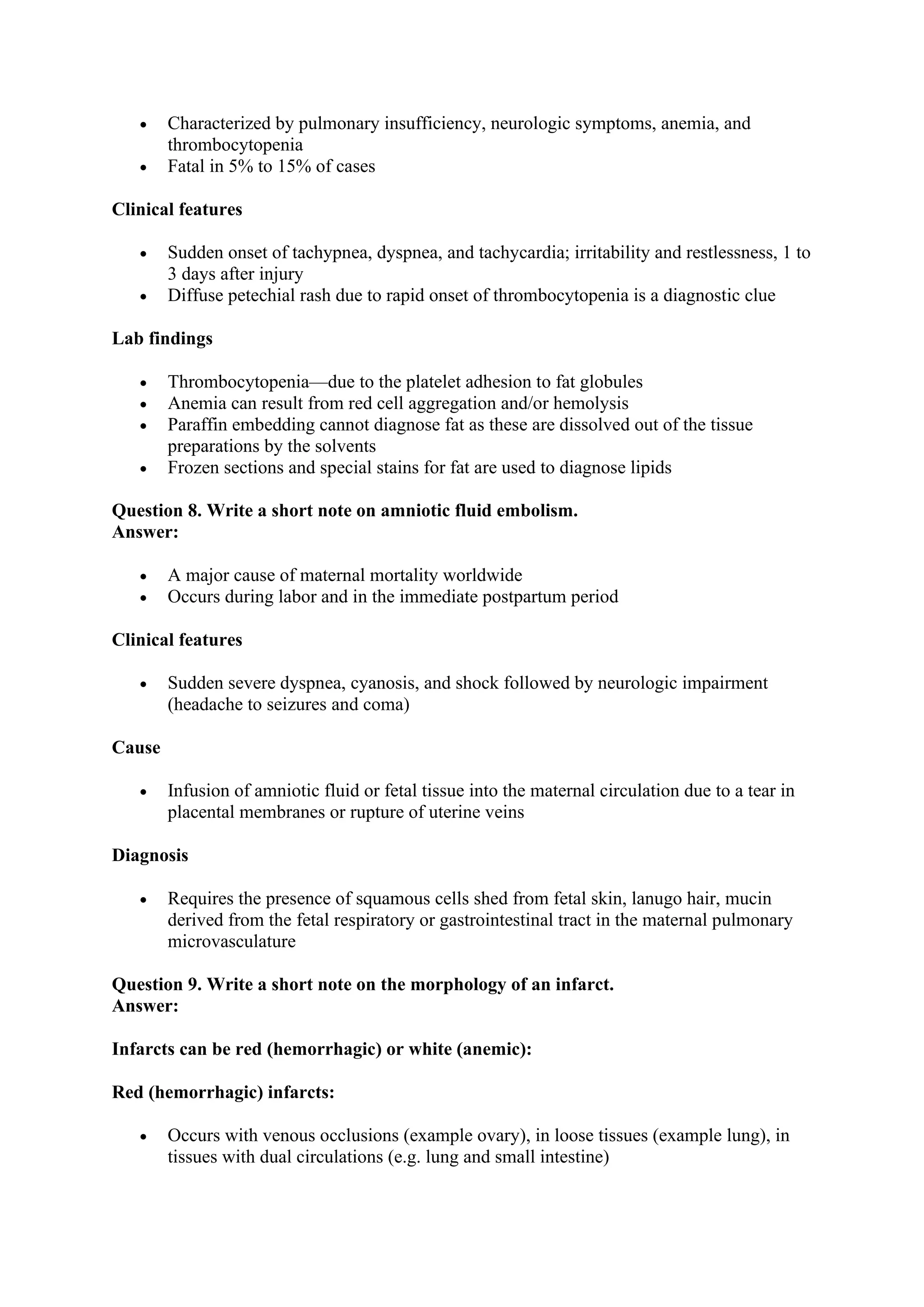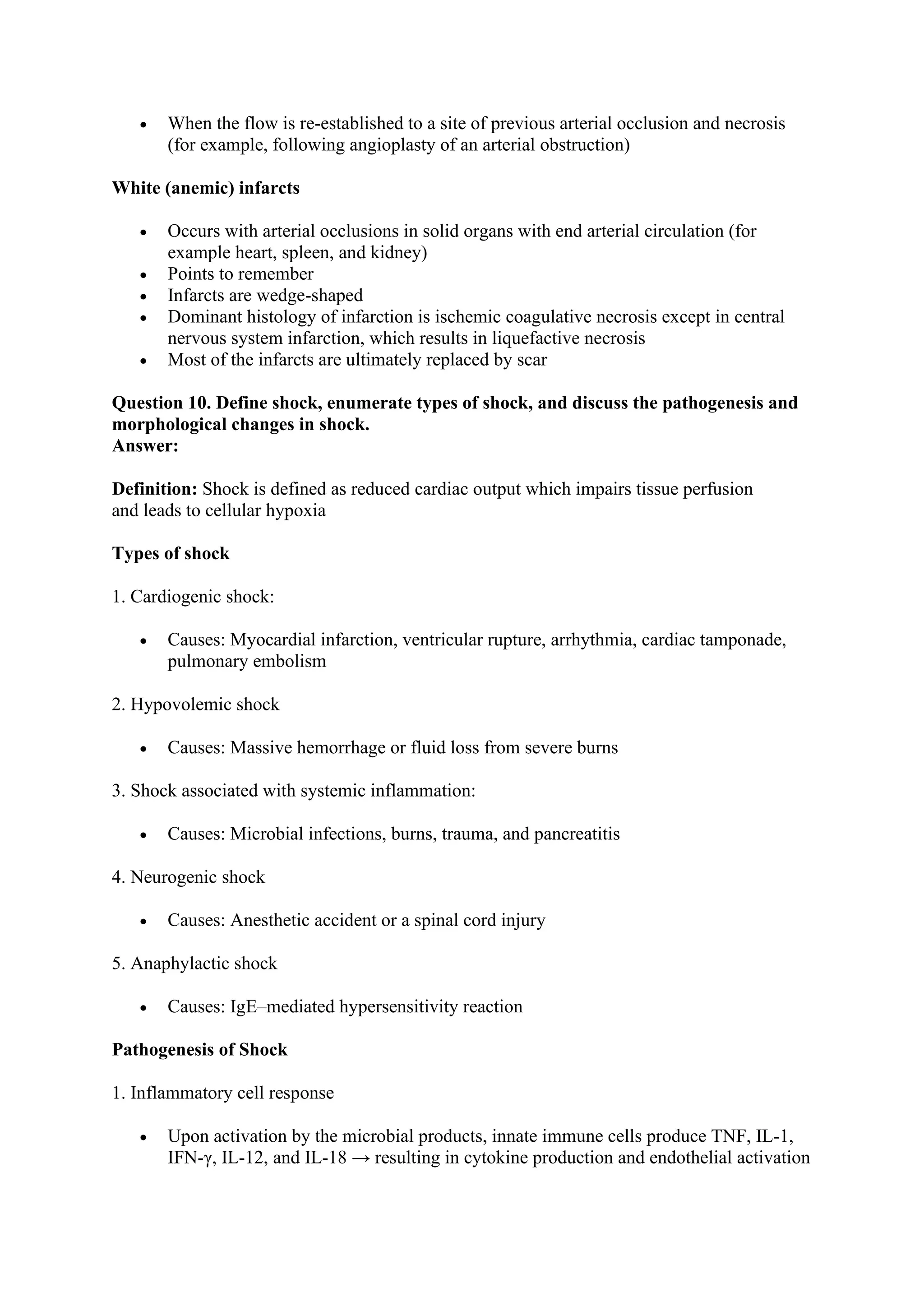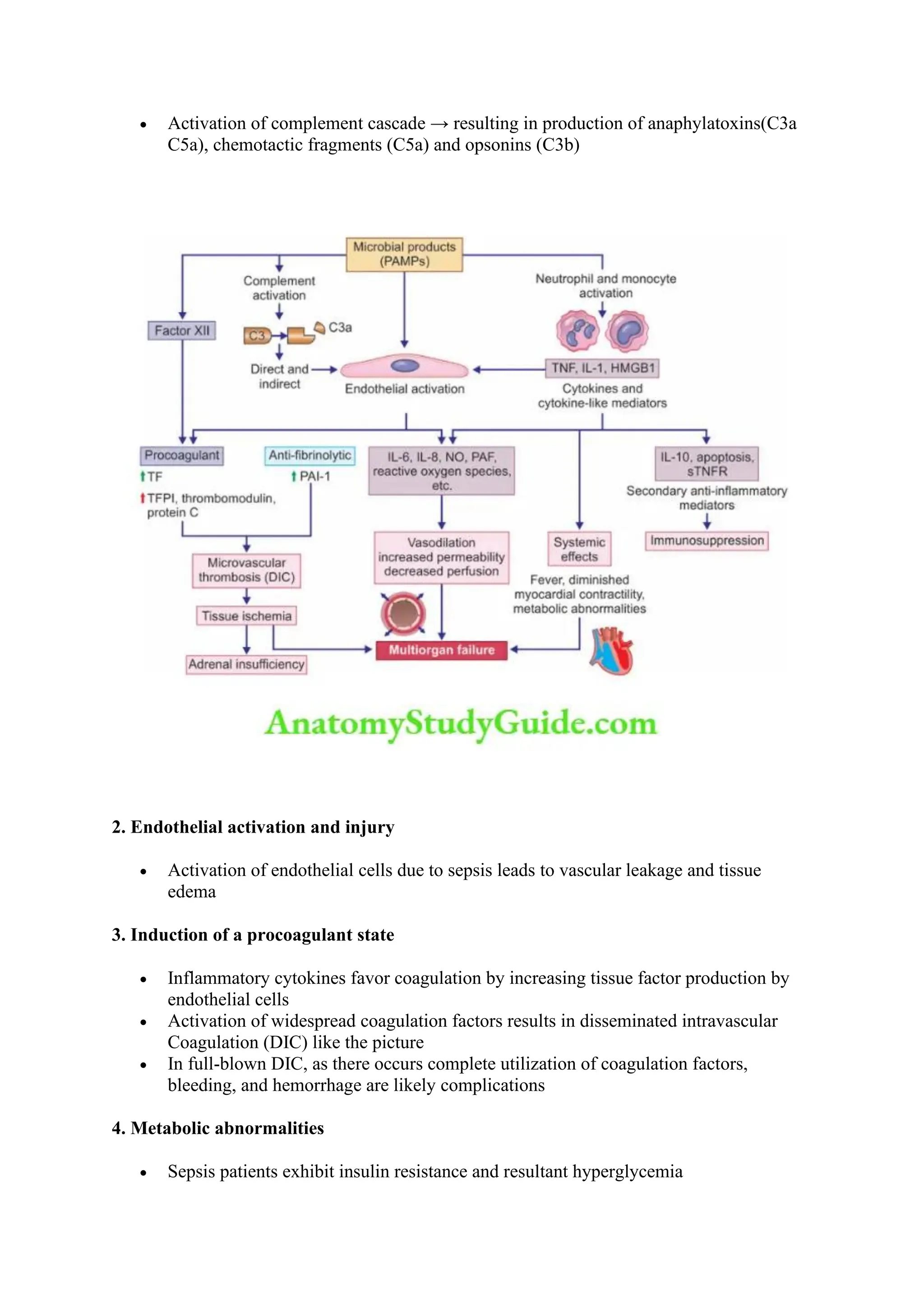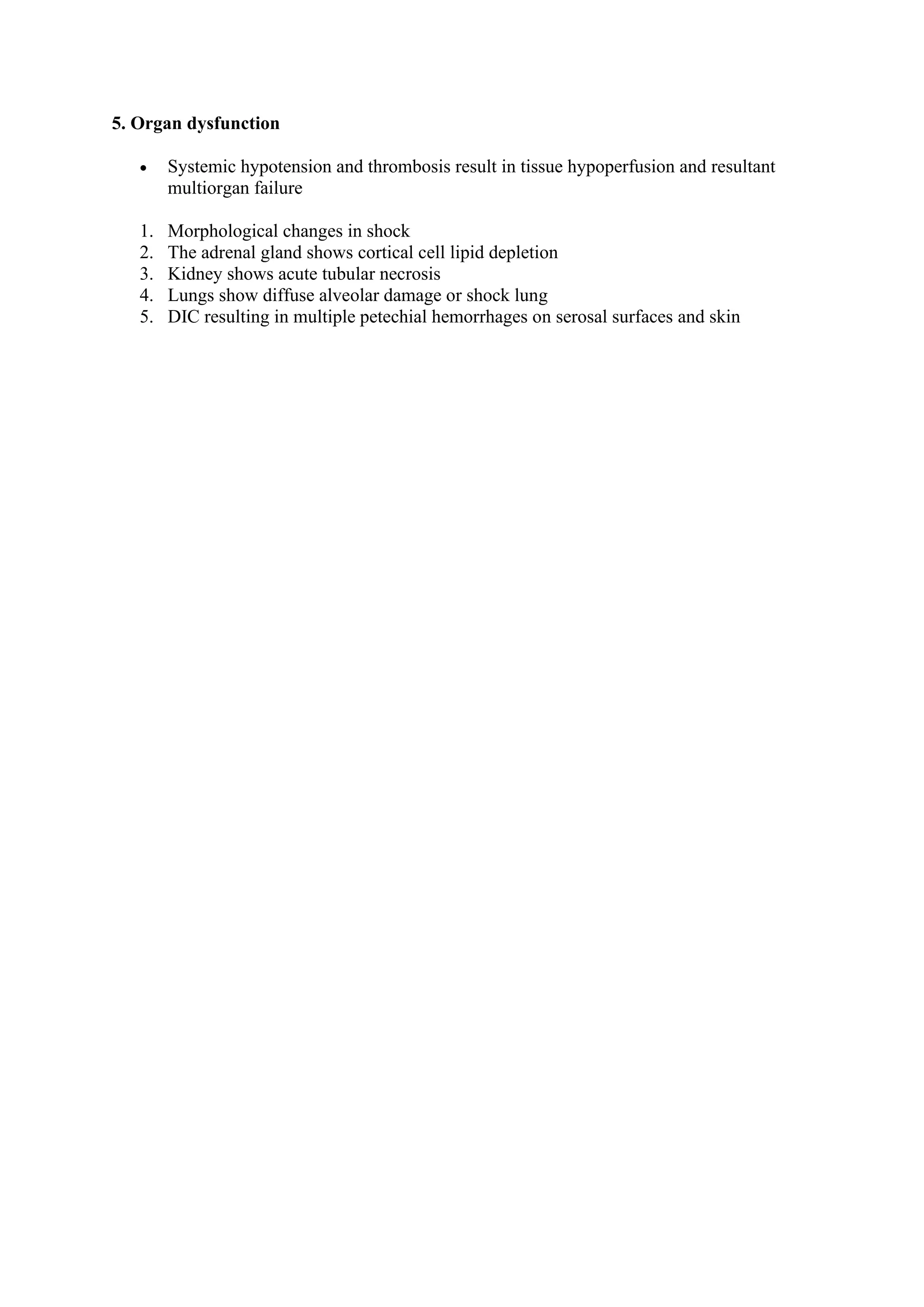This document discusses hemodynamic disorders and contains answers to 10 questions on related topics. It defines and classifies edema, discussing the etiopathogenesis and pathology of different types. It also discusses normal hemostasis mechanisms, Virchow's triad in thrombus formation, the morphology and fate of thrombi. Other topics addressed include heparin-induced thrombocytopenia, antiphospholipid antibody syndrome, types of embolism including Caisson disease, fat embolism, amniotic fluid embolism, the morphology of infarcts, and the definition, types, pathogenesis and morphological changes seen in shock.
